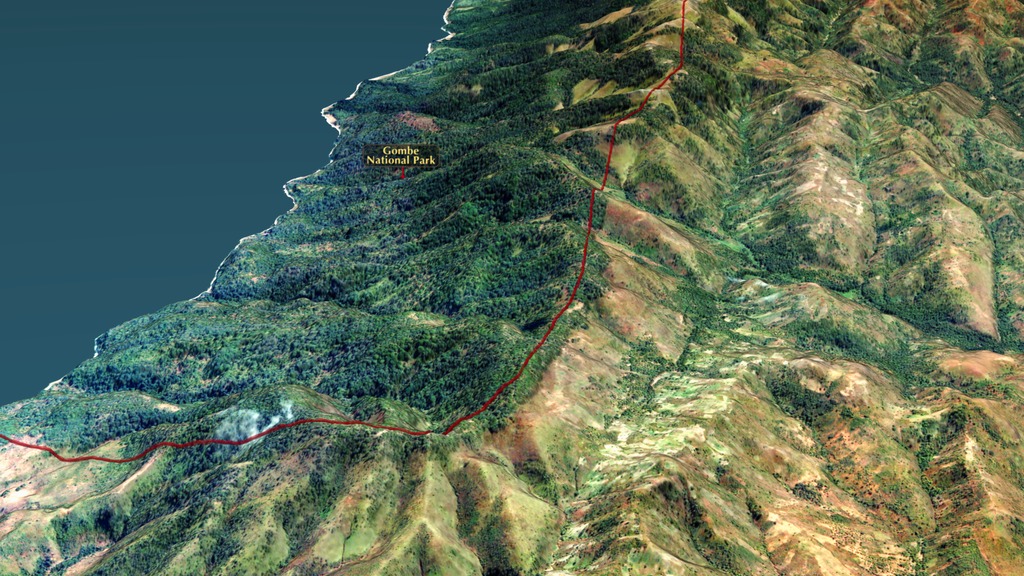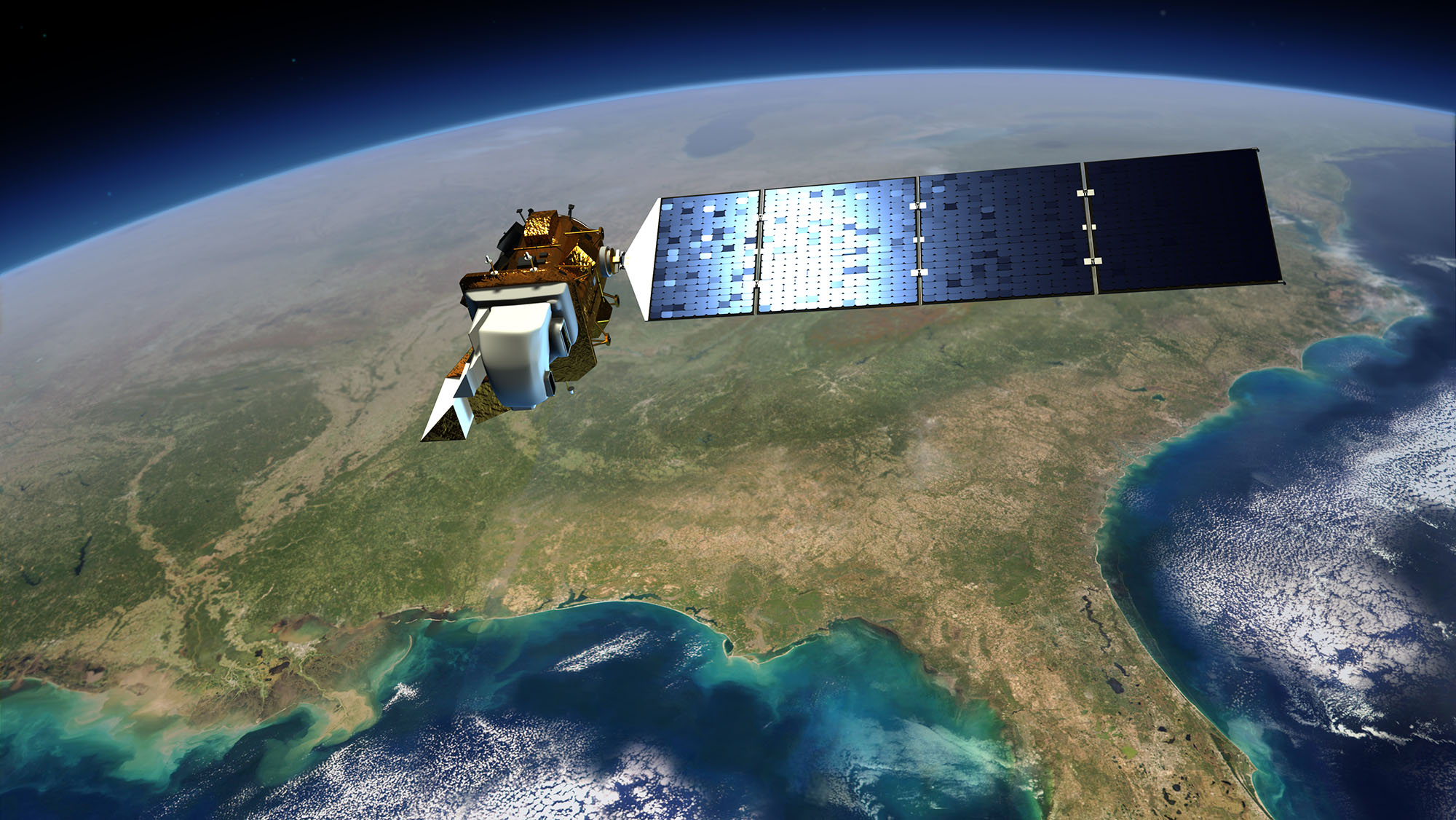Landsat Lends Chimps a Hand

Landsat data helps answer questions about threatened chimpanzee habitat.
From space, what used to be lush chimpanzee habitat in the rainforests of central Africa is now being threatened. Between 1972 and 1999, people have cut down significant swaths of forests southeast of Gombe National Park in Tanzania. As the forests disappeared so did the chimpanzee habitat, and the chimp population has been struggling. Data from NASA’s Landsat missions are helping scientists at the Jane Goodall Institute (JGI) use satellite imagery to observe chimpanzee habitats inside and outside of Gombe. In 2005, JGI started a forest monitoring program in partnership with the local community, and in 2009, equipped villagers with GPS-enabled smartphones and tablets to report their observations of potential threats to local forests and wildlife. The imagery from NASA’s Landsat missions and the observations of local citizens pushed Tanzania to develop the Village Forest Reserves, a taskforce created to manage natural resources. Watch the video below to learn more.
Watch forest cover in green become tree-free in brown to the southeast of Gombe National Park.
The Jane Goodall Institute uses data from NASA’s Landsat missions to help monitor changing chimpanzee habitats in Tanzania.

The boundary around Gombe National Park protects forested chimpanzee habitat from destruction.

Continuous destruction of chimpanzee habitat, seen by the abundance of brown in 1999, led to increased protection of natural resources.

NASA’s Landsat series of satellites have been observing Earth continuously since 1972.
For More Information
See NASA.gov
Credits
Please give credit for this item to:
NASA's Scientific Visualization Studio
-
Animators
- Cindy Starr (Global Science and Technology, Inc.)
- Trent L. Schindler (USRA)
-
Producers
- Corinne Nakamura-Rybak (Metropolitan Group)
- Patrick Lynch (NASA/GSFC)
- Jefferson Beck (USRA)
-
Scientist
- Lilian Pintea (The Jane Goodall Institute)
-
Writer
- Lacey Young (Intern)
Release date
This page was originally published on Monday, September 4, 2017.
This page was last updated on Wednesday, May 3, 2023 at 1:47 PM EDT.

![[Note: this version contains burned-in captions.] Data from Landsat satellites, a joint mission of NASA and the U.S. Geological Survey, have been critical to helping the Jane Goodall Institute in their work to protect chimpanzees and their habitat. In this video, Goodall and JGI scientist Lilian Pintea discuss the transformational role of seeing changing habitats from above.Complete transcript available.](/vis/a010000/a012400/a012487/1.17.finalHQ.NASA.Goodall.00810_print.jpg)
